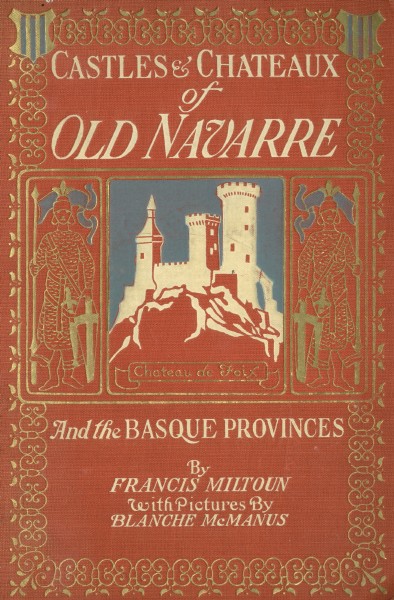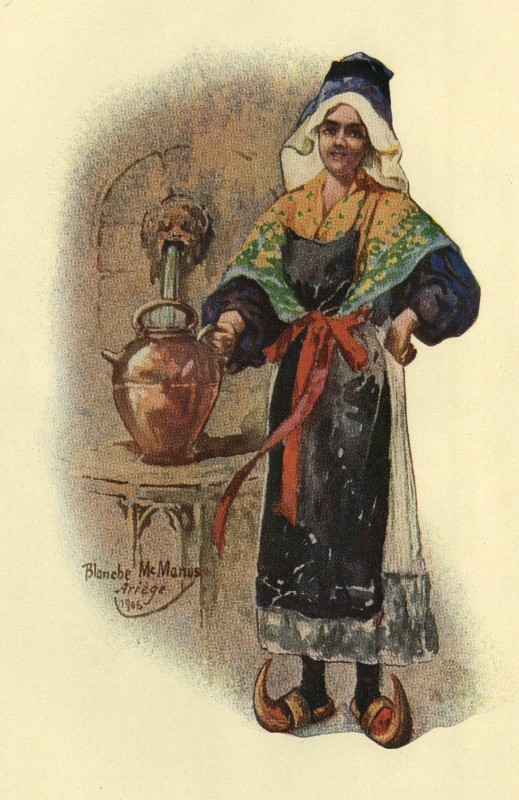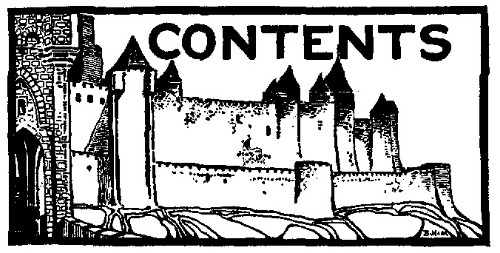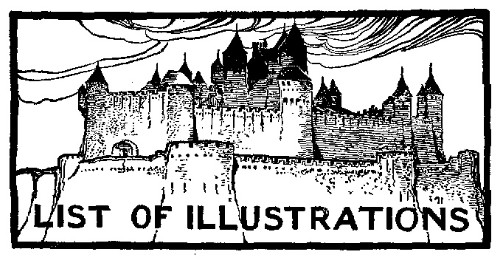 |
|
||
| Kellscraft
Studio Home Page |
Wallpaper
Images for your Computer |
Nekrassoff Informational Pages |
Web
Text-ures© Free Books on-line |
CASTLES AND CHATEAUX OF OLD NAVARRE AND THE BASQUE PROVINCES INCLUDING ALSO FOIX, ROUSSILLON AND BÉARN  BY FRANCIS MILTOUN Author of "Castles and Chateaux of Old Touraine," "Rambles in Normandy," "Rambles in Brittany," "Rambles on the Riviera," etc.  A PEASANT GIRL OF THE ARIÈGE With Many Illustrations Reproduced from paintings made on the spot BY BLANCHE MCMANUS BOSTON L. C. PAGE & COMPANY 1907 First Impression, October, 1907 COLONIAL PRESS Electrotyped and Printed by C. H. Simonds & Co. Bolton, U. S. A. By Way of Introduction "Cecy est un livre de bonne foy." Montaigne. No account of the life and historical monuments of any section of the old French provinces can be made to confine its scope within geographical or topographical limits. The most that can be accomplished is to centre the interest around some imaginary hub from which radiate leading lines of historic and romantic interest. Henri de Navarre is the chief romantic and historical figure of all that part of France bounded on the south by the Pyrenean frontier of Spain. He was but a Prince of Béarn when his mother, Jeanne d'Albret, became the sovereign of French Navarre and of Béarn, but the romantic life which had centred around the ancestral château at Pau was such that the young prince went up to Paris with a training in chivalry and a love of pomp and splendour which was second only to that of François I. The little kingdom of Navarre, the principality of Béarn, and the dukedoms and countships which surround them, from the Mediterranean on the east to the Gulf of Gascony on the west, are so intimately connected with the gallant doings of men and women of those old days that. the region known as the Pyrenean provinces of the later monarchy of France stands in a class by itself with regard to the romance and chivalry of feudal days. The dukes, counts and seigneurs of Languedoc and Gascony have been names to conjure with for the novelists of the Dumas school; and, too, the manners and customs of the earlier troubadours and crusaders formed a motive for still another coterie of fictionists of the romantic school. In the Comté de Foix one finds a link which binds the noblesse of the south with that of the north. It is the story of Françoise de Foix, who became the Marquise de Chateaubriant, the wife of Jean de Laval, that Breton Bluebeard whose atrocities were almost as great as those of his brother of the fairy tale. And the ties are numerous which have joined the chatelains of these feudal châteaux and courts of the Midi with those of the Domain of France. These petty countships, dukedoms and kingdoms of the Pyrenees were absorbed into France in 1789, and to-day their nomenclature has disappeared from the geographies; but the habitant of the Basses Pyrénées, the Pyrénées Orientales, and the Hautes Pyrénées keeps the historical distinctions of the past as clearly defined in his own mind as if he were living in feudal times. The Béarnais refers contemptuously to the men of Roussillon as Catalans, and to the Basques as a wild, weird kind of a being, neither French nor Spanish. The geographical limits covered by the actual journeyings outlined in the following pages skirt the French slopes of the Pyrenees from the Atlantic Gulf of Gascony to the Mediterranean Gulf of Lyons, and so on to the mouths of the Rhône, where they join another series of recorded rambles, conceived and already evolved into a book by the same author and artist.1 The whole itinerary has been carefully thought out and minutely covered in many journeyings by road and rail, crossing and recrossing from east to west and from west to east that delectable land commonly known to the Parisian Frenchman as the Midi. The contrasts with which one meets in going between the extreme boundaries of east and west are very great, both with respect to men and to manners; the Niçois is no brother of the Basque, though they both be swarthy and speak a patois, even to-day as unlike modern French as is the speech of the Breton or the Flamand. The Catalan of Roussillon is quite unlike the Languedoçian of the Camargue plain, and the peasant of the Aude or the Ariège bears little or no resemblance in speech or manners to the Béarnais. There is a subtle charm and appeal in the magnificent feudal châteaux and fortified bourgs of this region which is quite different from the warmer emotions awakened by the great Renaissance masterpieces of Touraine and the Loire country. Each is irresistible. Whether one contemplates the imposing château at Pau, or the more delicately conceived Chenonceaux; the old walled Cité of Carcassonne, or the walls and ramparts of Clisson or of Angers; the Roman arena at Nîmes, or the Roman Arc de Triomphe at Saintes, there is equal charm and contrast. To the greater appreciation, then, of the people of Southern France, and of the gallant types of the Pyrenean provinces in particular, the following pages have been written and illustrated. F. M. PERPIGNAN, August, 1907. _________________ 1 "Castles and Chateaux of Old Touraine and the Loire Country."

|
